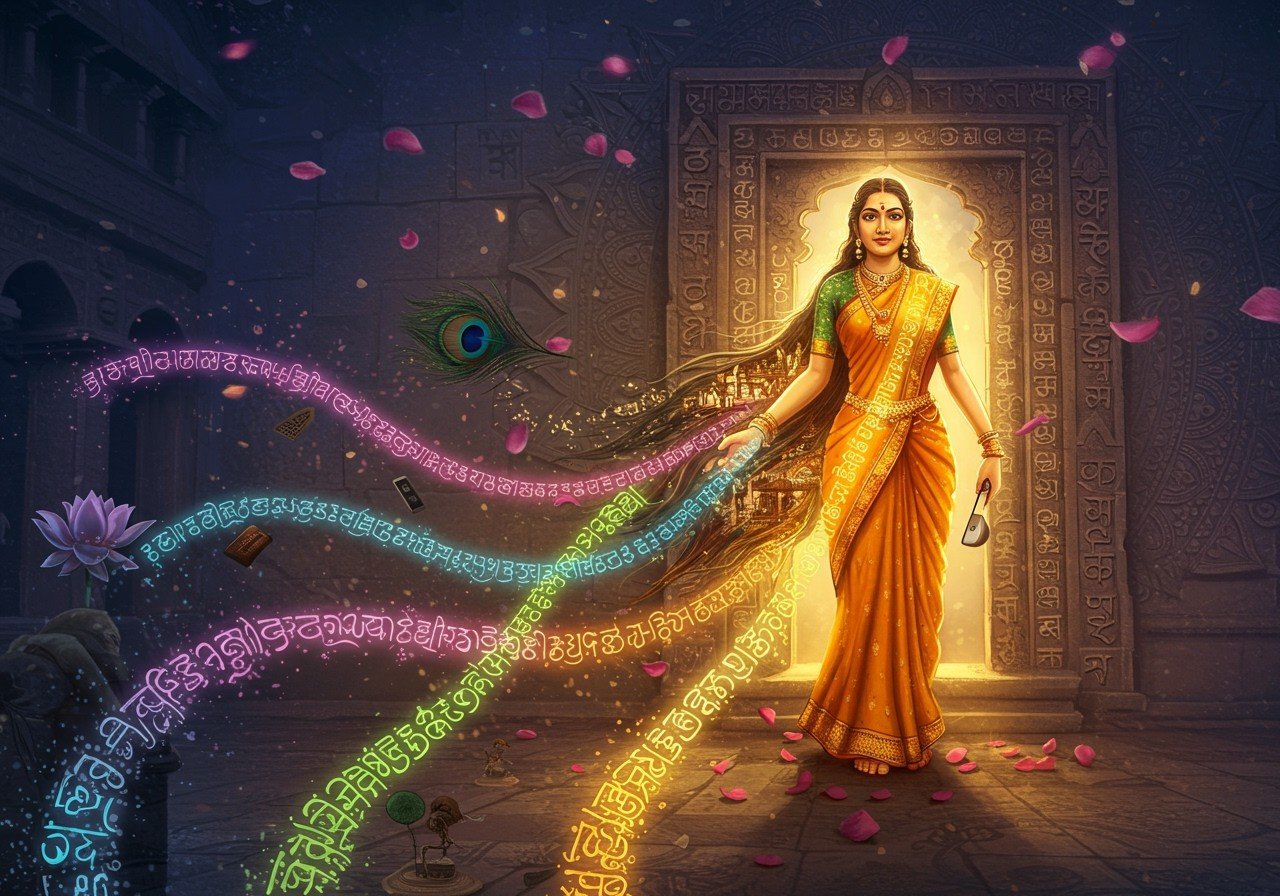
India, a land of vibrant cultures and ancient traditions, boasts a linguistic tapestry as diverse as its people. This exploration delves into India’s linguistic history, revealing a captivating narrative of evolution, influence, and cultural significance.
Ancient Linguistic Roots
The story begins with Vedic Sanskrit, the ancestor of many modern Indo-European languages. Used in sacred texts like the Rigveda, its influence on subsequent languages is undeniable. Prakrit languages emerged later, serving as the common tongue and finding their place in Jain and Buddhist scriptures. Tamil, a prominent Dravidian language, stands as a testament to a rich literary heritage, existing alongside the enigmatic undeciphered script of the Indus Valley Civilization. The Ashokan inscriptions, etched in the Brahmi script, played a pivotal role in its dissemination across the subcontinent.
Medieval Linguistic Developments
The medieval period witnessed the influx of Persian and Arabic, leaving an indelible mark on the linguistic landscape. This era saw the rise of regional languages like Hindi, Bengali, Marathi, and Gujarati, each developing its own unique character. Simultaneously, Dravidian languages like Kannada, Telugu, and Malayalam continued their evolution. The Bhakti and Sufi movements championed vernacular languages, while epic narratives like the Ramayana and Mahabharata shaped literary and linguistic trends. Urdu, a language born from cultural fusion, emerged as a distinct voice.
Colonial and Post-Colonial Linguistic Changes
British colonialism introduced English, profoundly impacting administration and education. Post-independence, Hindi was adopted as the national language, while linguistic reorganization led to the formation of states based on linguistic identity. Regional languages and dialects flourished, even as globalization exerted its influence. English, a legacy of the colonial past, continued to hold a prominent position.
Contemporary Linguistic Landscape
In modern India, English enjoys widespread usage, coexisting with Hindi, which dominates communication and media. Regional languages remain vital for preserving cultural identity, though some face the threat of endangerment. Technology and social media, powerful forces in the 21st century, shape language evolution. The government actively promotes linguistic diversity, recognizing its importance in education and international relations.
Cultural and Social Implications
India’s linguistic diversity is inextricably linked to its cultural richness. Language is woven into rituals, traditions, and social fabric, enriching festivals and ceremonies. Multilingualism fosters unity and national integration, while language itself serves as a marker of identity for various communities. This linguistic tapestry contributes significantly to India’s vibrant literary and artistic heritage.
Poojn.in: Supporting India’s Linguistic Diversity
Poojn.in, India’s leading online store for cultural and religious goods, recognizes the vital role of language in preserving heritage. We offer a wide selection of products to support and celebrate India’s linguistic diversity. Explore our collection:
- Sacred Texts in Multiple Languages: Discover religious texts in Sanskrit, Hindi, Tamil, and other regional languages, fostering a deeper connection with your spiritual practice. From ancient scriptures to contemporary interpretations, we offer a variety of formats to suit your needs.
- Audio and Video Resources: Immerse yourself in the beauty of Indian languages through audio recordings of chants, bhajans, and prayers. These resources are ideal for learning pronunciation and deepening your understanding of religious practices.
- Puja Items and Accessories: Enhance your spiritual experience with puja items specifically designed for different language traditions. From incense to offering plates, we offer everything you need for a fulfilling puja experience.
Visit Poojn.in today to explore our full collection and support the preservation of India’s rich linguistic heritage.
Delving Deeper: FAQs
How has technology impacted Indian languages? The digital age has brought both challenges and opportunities. While social media can contribute to language evolution and the spread of slang, it also provides platforms for language learning and preservation.
What role do literary, political, and social organizations play in language preservation? These organizations advocate for language development, promote literature in regional languages, and raise awareness about the importance of linguistic diversity.
What is the current status of endangered languages in India? Many languages face the threat of extinction due to factors like urbanization and the dominance of major languages. Efforts are underway to document and revitalize these endangered languages.
Conclusion
India’s linguistic journey is a testament to its rich cultural heritage and its capacity for adaptation and change. From the ancient echoes of Sanskrit to the modern influence of English, the languages of India reflect a vibrant and dynamic society. Preserving this linguistic diversity is crucial, not only for cultural identity but also for fostering unity and understanding in a nation as diverse as India. Poojn.in is committed to supporting this endeavor by providing resources that celebrate and promote India’s linguistic tapestry.
According to the Census of India (2011), India is home to over 780 languages, while Ethnologue (a catalog of world languages) documents 462 distinct languages. The Austroasiatic language family, including languages like Santal and Munda, arrived in eastern India from Southeast Asia approximately 4000-3500 years ago. India has a rich history of linguistic movements dedicated to the preservation and development of its diverse linguistic heritage.
Bhoganandishwara Temple: Weddings, Tradition, Serenity, and History
Bhutanatha Temples: Architecture, History, and Significance Explored


